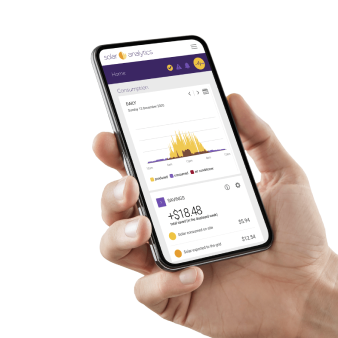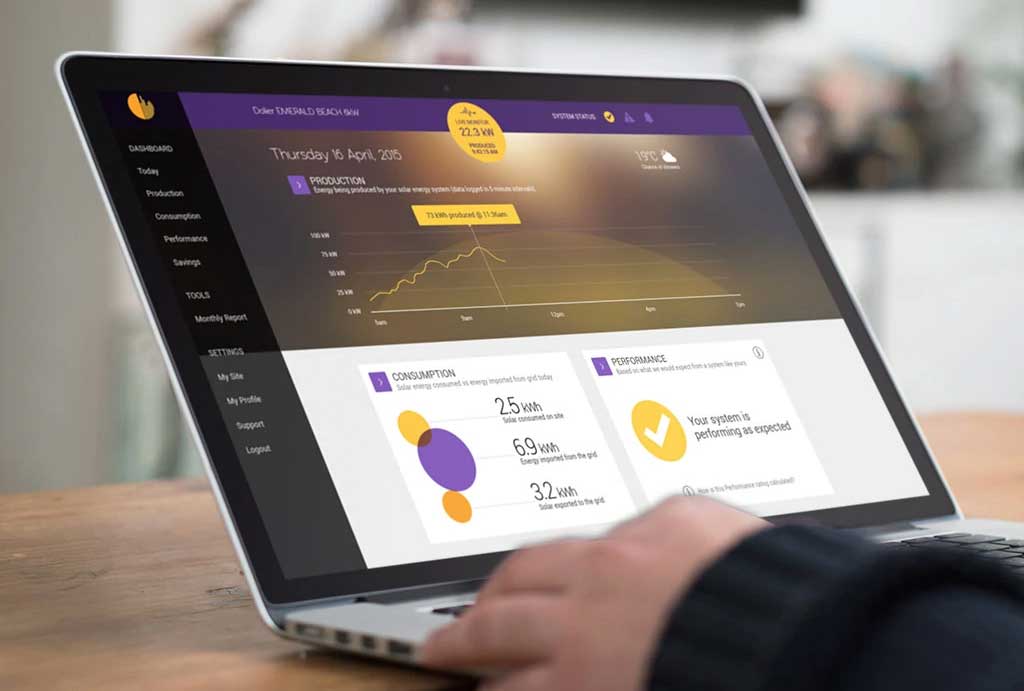Solar Monitoring Solutions
ENERGY MONITORING
In recent years, the market has seen a rise in energy monitoring units. Most inverter companies now provide their own monitoring systems, and we recommend choosing one that aligns with your specific system. Alternatively, there are affordable aftermarket options available.
This technology offers a valuable opportunity to track your power usage—how, where, and when it’s consumed—while also allowing you to monitor your energy generation.
As per the Clean Energy Council’s report, installing a renewable energy system contributes to the battle against climate change. According to http://www.environment.gov.au/climate-change, a mere 1 kW of solar power can result in saving 1-4 tonnes of greenhouse gases annually.
Understanding solar technology might be a new and potentially overwhelming experience for many. At Soltek Energy, we are committed to assisting you throughout the entire process. From gathering information to providing advice on maximising your investment benefits, we offer guidance at every step, ensuring you make the most of your solar journey.
Feel free to inquire for more details and guidance on selecting the monitoring solution that suits your needs.


Solar Analytics offers a cloud-based monitoring and analysis platform designed to offer valuable insights into the operational efficiency of solar photovoltaic (PV) systems.
Outperforming the monitoring capabilities of numerous string inverters, it surpasses them by incorporating numerous additional features. This platform delivers instant, real-time information on both solar production and energy consumption, offering immediate insights into the performance of your system. This swift identification of discrepancies or inefficiencies allows for prompt resolution.
Furthermore, the software provides users with comprehensive reports on the health of the system, enabling the proactive resolution of potential issues before they escalate into expensive repairs. The predictive maintenance feature of the software can substantially prolong the lifespan of your solar investment.
Additionally, the software incorporates weather forecasts, aiding in the anticipation and strategic planning for fluctuations in energy production. This forecasting proves pivotal in optimising the utilisation of solar energy and diminishing dependence on the grid.
It includes additional functionalities like the Plan Optimiser, which assesses all electricity plans within your region, analyses your actual consumption and generation data, and provides recommendations for the most suitable energy plan for you. The average annual savings for consumers through this feature alone amount to $400.
In summary, the Solar Analytics Monitoring software offers a versatile toolkit to optimise solar energy efficiency, cut down costs, and guarantee the durability of your solar system. It stands as a wise addition for any user in the realm of solar energy.

FAQs
How do I maximise my solar savings?
Owning a solar power system is just the beginning of significant energy savings. To really maximise the benefits of your solar panels demands a proactive approach and an energy plan where you actively manage your energy consumption, maintain your solar system, and monitor your usage.
This guide will help you fully maximise your solar investment and connect to the grid more efficiently.
Energy consumption optimisation strategies:
- Utilise your solar power during peak solar generation periods. Your solar panels generate the most energy during daylight hours. Try to align your household energy consumption with this peak production period to maximise direct usage of solar power and minimise dependence on the grid.
- Schedule high-energy tasks strategically by operating appliances like dishwashers, washing machines, and air conditioning during times of peak solar production. Consider using programmable appliances such as slow cookers that can operate with set timers for when your panels are at their most productive. This will not only utilise that solar energy to power your home but overall reduce your electricity bills and power bills.
- For tips on how to keep your energy consumption down, visit https://yourenergyanswers.com/reduce-electricity-bill-tips/
Choosing the right solar system size:
- Plan for your home’s energy needs by tailoring your system to ensure that your daily energy consumption can be powered predominantly with solar power. A well-sized system can provide enough energy for your hot water and heating and cooling accounts without excess energy going to waste.
To figure out what size system you need, use https://yourenergyanswers.com/calculate-your-solar-system-size/
Maintenance and cleaning for peak efficiency:
- Regular maintenance is required to ensure maximum output for your panels. Assess your cleaning needs based on your location; in areas with less rain or where panels accumulate dust, pollen, or other residues, regular cleaning is essential to maintaining panel efficiency.
A guide for cleaning your panels can be found here https://yourenergyanswers.com/clean-solar-panels/
- Consider professional cleaning services for challenging access or to ensure thorough cleaning from time to time.
Utilising technology for monitoring energy consumption:
- Monitor your energy with apps that can provide real-time insights into your energy usage, enabling you to track and manage your consumption effectively.
- Utilise apps that give you a detailed overview of your solar systems usage data. Opt for apps that offer comprehensive usage data, including real-time and historical patterns. This data can guide you in adjusting your energy habits to maximise the use of solar power and minimise grid reliance.
Understanding and utilising feed-in tariffs:
- Capitalise on surplus energy by feeding your system’s excess energy back into the grid. Although feed-in tariffs have become less generous over time, understanding, and utilising these credits can still contribute to your solar savings.
- Regularly monitoring your feed-in activity provides insight into your energy production and consumption patterns, helping you optimise your usage and FiT benefits.
Smart home integration for optimal energy use:
- Integrating your solar system with a smart home setup can help to optimise your energy usage. Automating your appliances to ensure that they run remotely or on timers during optimal production times and storing excess energy in a home battery system or using it to power water heaters for later use will optimise your solar savings.
For more ideas on how to make yours a smart home, visit https://yourenergyanswers.com/what-is-a-smart-home/
To really maximise your solar savings requires a multifaceted approach. By optimising your household’s energy usage, understanding the interplay between your solar and battery system, and utilising the tools available for optimisation, you can maximise your savings while contributing to environmental sustainability and selecting the best retail electricity plan for your needs.
